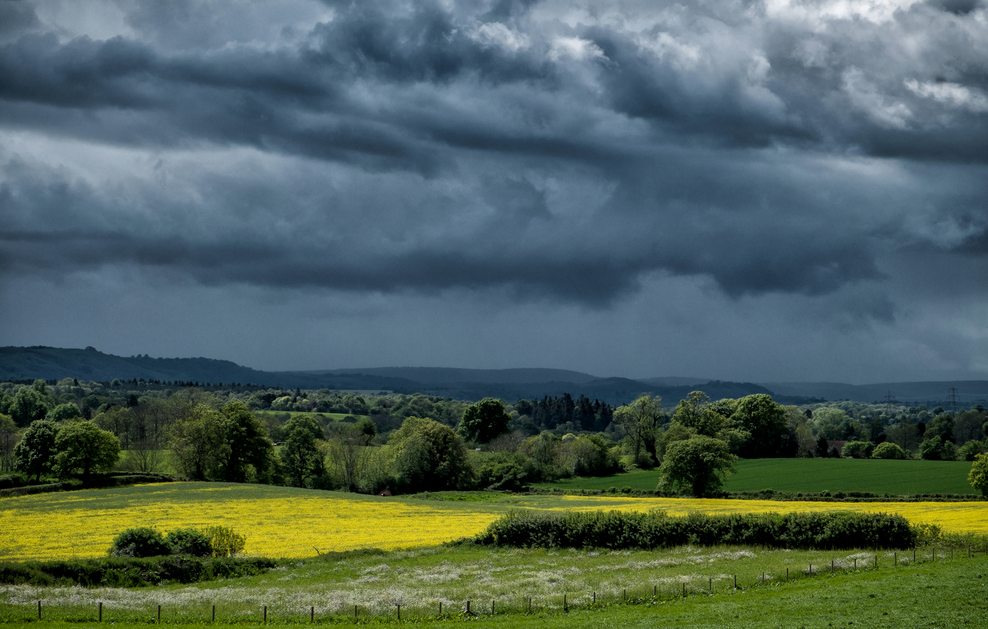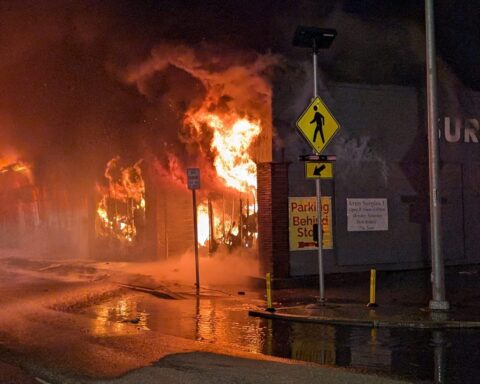Editor’s note: The following is extracted from Alarms and Discursions, by G. K. Chesterton (published 1910). All spelling in the original.
I suppose that, taking this summer as a whole, people will not call it an appropriate time for praising the English climate. But for my part I will praise the English climate till I die—even if I die of the English climate. There is no weather so good as English weather. Nay, in a real sense there is no weather at all anywhere but in England. In France you have much sun and some rain; in Italy you have hot winds and cold winds; in Scotland and Ireland you have rain, either thick or thin; in America you have hells of heat and cold, and in the Tropics you have sunstrokes varied by thunderbolts. But all these you have on a broad and brutal scale, and you settle down into contentment or despair. Only in our own romantic country do you have the strictly romantic thing called Weather; beautiful and changing as a woman. The great English landscape painters (neglected now like everything that is English) have this salient distinction: that the Weather is not the atmosphere of their pictures; it is the subject of their pictures. They paint portraits of the Weather. The Weather sat to Constable. The Weather posed for Turner, and a deuce of a pose it was. This cannot truly be said of the greatest of their continental models or rivals. Poussin and Claude painted objects, ancient cities or perfect Arcadian shepherds through a clear medium of the climate. But in the English painters Weather is the hero; with Turner an Adelphi hero, taunting, flashing and fighting, melodramatic but really magnificent. The English climate, a tall and terrible protagonist, robed in rain and thunder and snow and sunlight, fills the whole canvas and the whole foreground. I admit the superiority of many other French things besides French art. But I will not yield an inch on the superiority of English weather and weather-painting. Why, the French have not even got a word for Weather: and you must ask for the weather in French as if you were asking for the time in English.
Then, again, variety of climate should always go with stability of abode. The weather in the desert is monotonous; and as a natural consequence the Arabs wander about, hoping it may be different somewhere. But an Englishman’s house is not only his castle; it is his fairy castle. Clouds and colours of every varied dawn and eve are perpetually touching and turning it from clay to gold, or from gold to ivory. There is a line of woodland beyond a corner of my garden which is literally different on every one of the three hundred and sixty-five days. Sometimes it seems as near as a hedge, and sometimes as far as a faint and fiery evening cloud. The same principle (by the way) applies to the difficult problem of wives. Variability is one of the virtues of a woman. It avoids the crude requirement of polygamy. So long as you have one good wife you are sure to have a spiritual harem.
Now, among the heresies that are spoken in this matter is the habit of calling a grey day a “colourless” day. Grey is a colour, and can be a very powerful and pleasing colour. There is also an insulting style of speech about “one grey day just like another” You might as well talk about one green tree just like another. A grey clouded sky is indeed a canopy between us and the sun; so is a green tree, if it comes to that. But the grey umbrellas differ as much as the green in their style and shape, in their tint and tilt. One day may be grey like steel, and another grey like dove’s plumage. One may seem grey like the deathly frost, and another grey like the smoke of substantial kitchens. No things could seem further apart than the doubt of grey and the decision of scarlet. Yet grey and red can mingle, as they do in the morning clouds: and also in a sort of warm smoky stone of which they build the little towns in the west country. In those towns even the houses that are wholly grey have a glow in them; as if their secret firesides were such furnaces of hospitality as faintly to transfuse the walls like walls of cloud. And wandering in those westland parts I did once really find a sign-post pointing up a steep crooked path to a town that was called Clouds. I did not climb up to it; I feared that either the town would not be good enough for the name, or I should not be good enough for the town. Anyhow, the little hamlets of the warm grey stone have a geniality which is not achieved by all the artistic scarlet of the suburbs; as if it were better to warm one’s hands at the ashes of Glastonbury than at the painted flames of Croydon.
Again, the enemies of grey (those astute, daring and evil-minded men) are fond of bringing forward the argument that colours suffer in grey weather, and that strong sunlight is necessary to all the hues of heaven and earth. Here again there are two words to be said; and it is essential to distinguish. It is true that sun is needed to burnish and bring into bloom the tertiary and dubious colours; the colour of peat, pea-soup, Impressionist sketches, brown velvet coats, olives, grey and blue slates, the complexions of vegetarians, the tints of volcanic rock, chocolate, cocoa, mud, soot, slime, old boots; the delicate shades of these do need the sunlight to bring out the faint beauty that often clings to them. But if you have a healthy negro taste in colour, if you choke your garden with poppies and geraniums, if you paint your house sky-blue and scarlet, if you wear, let us say, a golden top-hat and a crimson frock-coat, you will not only be visible on the greyest day, but you will notice that your costume and environment produce a certain singular effect. You will find, I mean, that rich colours actually look more luminous on a grey day, because they are seen against a sombre background and seem to be burning with a lustre of their own. Against a dark sky all flowers look like fireworks. There is something strange about them, at once vivid and secret, like flowers traced in fire in the phantasmal garden of a witch. A bright blue sky is necessarily the high light of the picture; and its brightness kills all the bright blue flowers. But on a grey day the larkspur looks like fallen heaven; the red daisies are really the red lost eyes of day; and the sunflower is the vice-regent of the sun.
Lastly, there is this value about the colour that men call colourless; that it suggests in some way the mixed and troubled average of existence, especially in its quality of strife and expectation and promise. Grey is a colour that always seems on the eve of changing to some other colour; of brightening into blue or blanching into white or bursting into green and gold. So we may be perpetually reminded of the indefinite hope that is in doubt itself; and when there is grey weather in our hills or grey hairs in our heads, perhaps they may still remind us of the morning.









